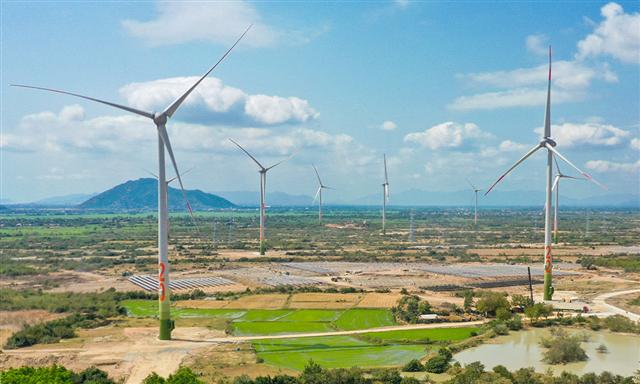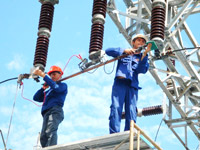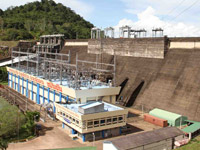Cement makers demand protection until AFTA
Cement makers demand protection until AFTA
Cement factories in Laos want the government to protect domestic firms until 2015 so that they can improve and prepare themselves for the Asean Free Trade Area.
“We do not have to implement Asean Free Trade Area obligations yet so the government should protect domestic firms,” a representative of a cement company in Laos told Vientiane Times recently, adding that the cement factories in Laos are continuing to improve in readiness for AFTA.
The cement company official who asked not to be named said that he wanted the government to stop the import of foreign cement into Vientiane, aiming to help domestic firms sell their goods into the domestic market after finding out that the inflow of foreign cement makes this difficult for them.
According to a report from the Vientiane Industry and Commerce Department, the price of imported cement is a little lower than that of domestic cement while Lao people currently also prefer foreign cement, believing it to be of better quality than domestic.
Commerce officials have urged the cement makers in Laos to prepare for stronger competition once the Asean Free Trade Area takes place in 2015 as the Lao government will no longer be able to impose the high import tariff on cement from Asean member countries they can today.
According to a study funded by the Asian Development Bank, Lao cement manufacturing will be one of the industries which will face a big negative impact once the AFTA takes place because all of the import tariffs will be removed.
The study suggests that the government should continue supporting a more favourable business environment in the country, especially with respect to competitiveness, so these companies can remain competitive once the AFTA takes place.
An assessment of domestic demand for cement and raw material availability should be conducted in order to prevent cement shortages that could lead to unnecessarily high prices, the study highlights.
Other areas which the Lao government should address are the improvement of infrastructure and logistics systems to reduce transportation costs, and the bolstering of the reputation of Lao cement products.
In April and May the retail price of cement in Laos saw a rapid rise due to the cost of transportation. Cement carriers stopped the transport of cement from factories to Vientiane because they needed to charge a high transport fee. The disrupted supply of cement from the factories was one of the main causes of the cement price hike.
The study also suggested that, given that the future demand is promising, active investment in the cement industry should be considered in the context of economies of scale.
At present, there are more than six cement factories in Laos with a combined production capacity of about 1.5 million tonnes per year.
vientiane times






.jpg)










